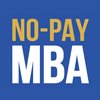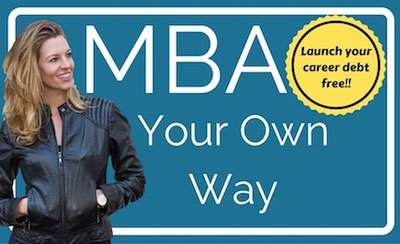by Laurie Pickard | Oct 24, 2013 | Courses, Platforms, and Profs, Thoughts on Higher Ed and Life
Operations Management is one of those classes that causes you to see your whole world differently. The class is more conceptual than mathematical – though there is some math involved – and we’ve covered such concepts as The 4 Dimensions of Performance, The Bottleneck in a Production Line, Inventory Turns, Throughput, and Capacity. Now I’m looking at every multi-step process in my life with new eyes. I even found The Seven Sources of Waste – and hence the opportunities for improved efficiency – in the Indian vegetable curry and garlic naan I made for dinner yesterday evening.
- Overproduction. There are only two of us, but my naan recipe produced 12 fluffy pieces of bread.
- Transportation. The spice packet I used to flavor my curry was produced in India. I purchased it in St. Louis, MO and packed it in my shipment to Rwanda, where my husband and I are stationed. Talk about transportation! If only I could find Indian spice packets locally.
- Re-work. My inexperienced hands took multiple attempts to form round naan. In the end, they were still uneven – but delicious.
- Over-processing. I budgeted too much time for the curry, and too little for the bread, so the curry ended up cooking longer than it needed to. No effect on the taste, but a small amount of wasted electricity.
- Unnecessary motion. Why are cutting boards always too small? Seems like I’m constantly going back and forth between the cutting board and the pot on the stove.
- Inventory. All those chopped veggies ready to go into the pot. In Operations Management, “inventory” is the item that is going through the process – in this case vegetables going through a process of becoming curry.
- Waiting– for the web page with the recipe to load. Could Rwanda’s internet be any slower?
by Laurie Pickard | Oct 17, 2013 | Thoughts on Higher Ed and Life
Not everybody is happy about MOOCs. It remains to be seen how exactly online courses will change higher education overall, but many people - including the author of a recent Wall Street Journal article - have predicted that smaller universities will start using video lectures from high profile professors as a supplement to or in lieu of to their own teaching staff - and some people, especially professors, are pretty upset about it. I recently came across an article on Slate.com decrying this potential development as being disastrous for both students and professors. As the author, himself a university professor, says:
“How do you teach tens of thousands of people anything at once? You don’t. What you can do over the Internet this way is deliver information, but that’s not education. Education, as any real teacher will tell you, involves more than just transmitting facts. “
Of course education is more than just transmitting facts, but learning how to use information must be an active process, one in which the teacher can guide the students, but for which students must ultimately be responsible. It doesn’t matter how many people you’re trying to teach - you’re never teaching everyone at once because everyone ultimately has to teach themselves. It isn’t that I don’t value good teaching, but I am of the opinion that learning is never passive. You can never walk into the classroom and expect the teacher to do all of the work, whether the class has 5 students or 500.
This has gotten me thinking: how exactly do we learn? Perhaps as a result of the influence of my Operations Management course, I decided to break down my own experience of learning into various components, so as to assess how well each of these can be addressed in an online platform. Here is what I came up with:
Learning activities that can easily be done alone in front of a computer
- Listening to a professor lecture. This is the hallmark of an online course, and it can certainly be done solo, in front of a computer screen.
- Reading. Also easily done outside of the traditional class format.
- Practice problems and case studies. My “hard skills” classes - Corporate Finance, Accounting, and Operations Management - all make use of practice problems and case studies. I tend to spend just as much time with the problems as with the lectures, and this is where I really start to use what I’ve learned.
- Processing new material through writing. For me, writing is one of the most powerful ways to feel ownership of something I have learned. If I can integrate new knowledge with what I already know through writing, then I really own it. Hence, this blog.
Learning activities that are more difficult to do in an online course but are still possible
- Processing course material with other students. Virtual discussion forums are definitely much more awkward than classroom discussion, but I still see some value in them. If there were a way to form small study groups - no more than 4 people - then they would really be useful.
- Processing course material with the professor. Some professors host “virtual office hours.” Not the same as regular office hours, but this format still does provide a way for students to ask questions that weren’t answered in the lectures
Learning activities that are impossible outside of the classroom
- Answering questions posed by the professor. I am a big believer in the Socratic method, in which a teacher asks questions of a student in order to make him or her think. This requires a face-to-face interaction that can’t really happen in an online course. However, it doesn’t happen easily in a large lecture course either.
- Getting individualized professor feedback. In a class of 120,000 there is no way a professor can even begin to give individualized feedback for the work students do. This to me is the biggest drawback to online courses, mostly because professor feedback is highly motivating, whether it comes in the form of comments on an essay, encouragement to keep grappling with the material, or a reaction to a student’s comments in class.
My conclusion: although online learning is not a perfect substitute for classroom learning, it is always up to the student to do the heavy lifting, and a highly motivated student can find most of what he or she needs, even in an online course.
by Laurie Pickard | Oct 9, 2013 | Courses, Platforms, and Profs, Thoughts on Higher Ed and Life
My Intro to Accounting professor recently posted some demographic information from the course pre-enrollment survey. I find this data very interesting, so I’m sharing the highlights here.
|
Students enrolled:
|
127,569
|
|
Active students:
|
91,865
|
|
Number of students submitting homework:
|
28,951
|
|
Total discussion forum posts:
|
5,694
|
|
Number of students posting:
|
2,876
|
First, check out the number of students enrolled. Wow! Over 120,000 students. This course is really putting the MASSIVE into Massive Online Open Course. And of those, almost 92,000 are active – meaning that they are participating in the course in some form. Those roughly 29,000 submitting the homework are the ones I consider to be taking the course seriously – as previously mentioned, most people who sign up for MOOCs don’t finish them, or don’t participate fully.
Notice how many students are posting on the discussion boards. Around 3,000, with roughly two posts per person. My main frustration with online courses so far is how overwhelming the discussion boards are. I registered for emails from the International Study Group board, and my inbox was flooded. In this class, only a small fraction of the students are participating in the discussions, and it’s still totally swamped with comments.
|
Male:
|
|
54%
|
|
First MOOC:
|
|
53%
|
Roughly evenly divided male/female. And about half having previously enrolled in a MOOC.
Ages of students:
|
21 and under:
|
|
7%
|
|
22 – 30:
|
|
39%
|
|
31 – 40:
|
|
27%
|
|
41 – 50:
|
|
16%
|
|
51 – 60:
|
|
9%
|
|
61 and over:
|
|
4% (including 8 students over 90!)
|
I’m not sure I believe that there are 8 students over age 90 – that seems like a joke to me – but hey, it’s possible. Besides those 90-year-olds, it’s no surprise that the people taking these courses are generally post-college age. Since this method of education doesn’t have the same legitimacy as traditional university studies (yet), it makes sense that most people in the college age bracket who want to take college classes would be doing it at a regular college. The table below paints a similar picture.
Highest level of education
|
High school or below:
|
|
6%
|
|
College up to Bachelors’ Degree:
|
|
13%
|
|
Bachelors’ Degree:
|
|
44%
|
|
Masters’ or Professional Degree:
|
|
35%
|
|
PhD:
|
|
3%
|
I wonder if these numbers reflect the type of course; since accounting has such obvious real-world applications, it may be that more people who have already gone to college or graduate school are interested in picking up these skills, versus – I don’t know – Intro to English Literature.
Now here’s where it really gets interesting.
|
Number of Countries Represented:
|
|
188
|
Holy smokes! There are only about 190 countries in the world! (Plus or minus a few depending on how you count.) That means that almost every country in the world has a representative in this class. I wonder if there are others besides me who are taking the course from Rwanda.
Top Ten Countries
|
United States:
|
|
38%
|
|
India:
|
|
8%
|
|
Canada:
|
|
4%
|
|
Philippines:
|
|
2%
|
|
Spain :
|
|
2%
|
|
Australia:
|
|
2%
|
|
Russia:
|
|
2%
|
|
United Kingdom:
|
|
2%
|
|
Brazil:
|
|
2%
|
|
China:
|
|
2%
|
Yes, the plurality of students in the class are from the US, but it isn’t a majority. These stats on the international composition of the class highlight for me how useful MOOCs can be for students who don’t have access to an American university education.
by Laurie Pickard | Oct 1, 2013 | Courses, Platforms, and Profs, MOOC MBA Design, Thoughts on Higher Ed and Life
Just a couple of weeks ago the University of Pennsylvania’s Wharton School of Business announced it was putting free versions of its first year MBA courses on Coursera. I am taking two of these courses, and they are top notch – so good, in fact, that I think I may have missed a calling as an accountant (more on that in another post). I am of course thrilled that one of the top-ranked business schools in the US has decided to make its first year curriculum available free of charge, but why would Wharton give away this material, which is basically the same product it is selling to its regular students? Granted, Wharton isn’t granting any academic credit to people who complete these courses, but the material is the same as in the paid versions. This begs the question, isn’t Wharton undercutting its ability to attract paying students by giving away the same product it charges for? There are three reasons I can think of why the school might consider it a good idea to give away the milk from this particular cow.
- Wharton believes there is no overlap between potential paying students and students interested in taking courses for free.
- Wharton hopes to use these free courses to attract paying students.
- Wharton believes that value of its MBA lies in the degree granted by the institution, not in the skills and knowledge embodied therein. Wharton assumes that potential students will also see it this way.
In order for Wharton (and other schools) to post their courses online without risking losing their core business, they must believe in the third conclusion. Indeed, signaling is quite important when it comes to degrees of all types. If your resume says Harvard or MIT or Yale, or any of the set of big-name schools, that’s a strong signal that you a) were accepted by a prestigious school, and b) performed well enough in that environment to have graduated. Does a Statement of Accomplishment from Coursera have the same effect?
I tend to think not, so I was surprised when a decision by the instructors of my International Organizations Management course not to offer a Statement of Accomplishment option sparked a firestorm of comments on the course discussion forum. Nonetheless, when I tell people I am designing my own MBA program from free online courses, the most common question I get asked is, are you getting credit? No, I’m not. But I believe that the coursework is intrinsically valuable, with or without the piece of paper.
For me, this project’s success hinges on three things:
- The availability of enough high-quality free course material to equal what is offered in an MBA degree program. Thanks to Coursera, edX, and others, check.
- My ability to complete the courses and to absorb the information. So far, also a check.
- Future employers believing that I have acquired useful skills and knowledge through this endeavor.
The last criteria is as yet an unknown. Admittedly, my method of bringing legitimacy to my self-made MBA – blogging – is remarkably inefficient. I enjoy doing it, and I think it’s necessary if anyone at all is to take me seriously. Practically speaking, however, I can mention my project in a job interview, or even put a line or two on my resume, but an employer would need to dig a little in order to see that I really do have the skills that come with a traditional MBA. And even if he or she read my blog, they would still have to take my word for it to some extent. That takes a lot longer - and requires more trust - than reading the words “Wharton School of Business” on a CV.
Much of the discussion in the book College Unbound, one of several new books on the subject of how post-secondary education is changing, centers on how students who don’t do traditional degree programs can signal that they have acquired skills that employers desire by other methods. The information is out there, but it remains to be seen how online courses can go beyond personal edification and translate into increased job prospects. I’m optimistic about the possibilities, but we’ll all have to wait and see.
by Laurie Pickard | Sep 17, 2013 | Courses, Platforms, and Profs, Thoughts on Higher Ed and Life
First semester is in full swing. I’m taking three courses - Introduction to Corporate Finance, Introduction to Accounting, and a class called New Models of Business in Society. The latter two courses are offered through Coursera, and they operate just like regular university courses, sans the classroom. One nice thing about Coursera courses is that while you are held to a schedule, there are new courses starting all the time. My accounting class, for example, started this week and runs for the next ten weeks. New Models of Business in Society started three weeks ago and runs for five weeks.
Finance and accounting are “hard skills” classes involving numbers, spreadsheets, and generally accepted rules and principles. New Models in of Business Society is part of a unit on leadership that I am including in my first year curriculum. For the purposes of my MBA, I am approaching leadership as “ways of thinking about work in life and society.” New Models takes a macro view of how businesses are perceived to act, how they ought to act, and how they do act. The professor, R. Edward Freeman, a business ethicist, is leading us through the progression of thought on corporate citizenship, from corporate philanthropy a la Andrew Carnegie to the emerging view that corporations can work towards a better world as part of their core business.
For another piece of my leadership unit, I’m reading books on the role of work in our lives, specifically how to maximize personal productivity and fulfillment. One of the best books on this topic is Drive: The Surprising Truth About what Motivates Us by Daniel Pink. Pink argues that work is fulfilling when it addresses three fundamental needs: autonomy, mastery, and purpose. This three part formulation really appeals to me, and I can clearly identify times in my own life when my work has fallen into this sweet spot, meeting all three criteria - and times when it hasn’t. I know that I work best when I am able to choose when and how to work, when I am doing tasks that are challenging enough to require my full attention, and when I can see that my work is contributing to a worthy goal.
When I was in the Peace Corps I worked with a youth group. One day, I asked the kids in the youth group what their favorite activities were. Most of the boys and girls said things like, “I like to play baseball,” or, “I like riding a bike.” But one boy surprised me by saying, “I like to work.”
“Really? That’s your favorite activity, work?” I asked him.
He nodded. Yes, he liked to work.
I thought it was weird for a kid to list work as his preferred activity, but I’ve thought about his answer in the years since that conversation. After reading Daniel Pink’s book, I realized that one of my favorite activities is also work - provided that the work meets those three criteria of autonomy, mastery, and purpose.
Another great book on this topic - a new book - is Springboard: Launching Your Personal Search for Success by G. Richard Shell, a professor at the University of Pennsylvania’s Wharton School of Business. Shell makes a similar argument about the importance of “meaningful work” to overall personal happiness. Finally, on the topic of work and life, I highly recommend Jason Fried’s TED Talk, “Why Work Doesn’t Happen at Work,” in which he talks about the types of environments in which people do their best work - not usually the office during working hours.
Between Freeman’s course, the books, and assorted TED Talks, I’m getting both the global view and the personal view of what work and business could and should be like. To round out my leadership unit, I’m looking for resources that address the role of managers - both in encouraging the people they manage to do their best work and in pushing their companies to be the best citizens they can be. Your suggestions welcome.




